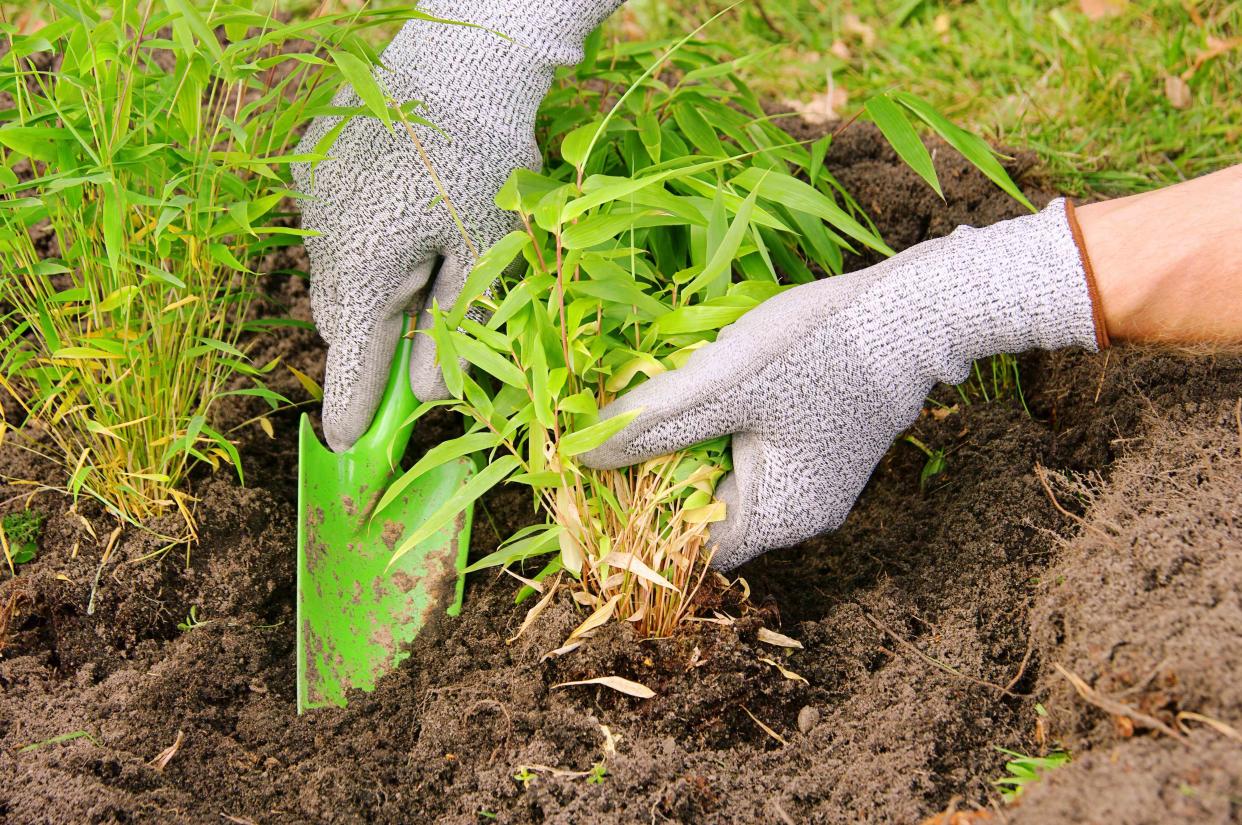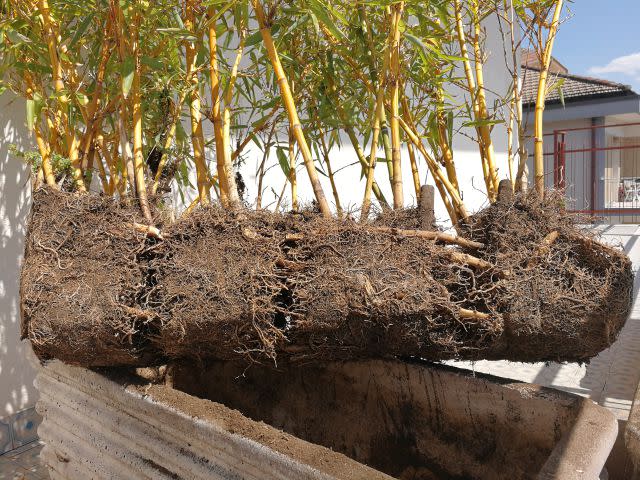How to Transplant Bamboo Successfully (Without Killing It)

LianeM / Getty Images
Bamboo plants are relatively easy to grow. A diverse group of woody perennial evergreen grass, bamboos—of which there are more than 1,500 cultivars—are incredibly fast-growing, and can easily be propagated by transplanting rhizome cuttings from an established planting.
While caring for bamboo requires little effort, transplanting bamboo can be hard work, involving digging, lifting, and dividing an existing bamboo plant. To ensure your bamboo survives after it has been relocated, follow the proper transplanting steps below.

lucamato / Getty Images
When to Relocate Bamboo
Do you have bamboo growing out of control in a corner of your yard and want to move it to another spot? Or perhaps you recently purchased a young bamboo plant from a plant nursery that you'd like to add to your garden. Then it's probably time to transplant them.
You don't want to transplant bamboo when new shoots are forming. The best time of year to transplant bamboo is early spring before it starts to grow shoots, or in the late fall when it has finished growing for the season. Never transplant bamboo in the summer during its active growth period.
Bamboo roots can be sensitive to sunlight and dry conditions, so it's important to make sure they remain moist during the entire transplanting process. If possible, choose a cloudy day to transplant bamboo, or transplant it in the evening when the sun is less intense.
Want more gardening tips? Sign up for our free gardening newsletter for our best-growing tips, troubleshooting hacks, and more!
Fun Fact
Those eye-catching sculptural lucky bamboo plants aren't actually bamboo. While it grows rapidly and looks like bamboo, it's actually closer to a succulent plant. Want to know how to transplant lucky bamboo? Follow these guidelines.
How to Transplant Bamboo
If you are transplanting an established bamboo plant, select a healthy section of bamboo culms (stems) to dig up and relocate. Make sure there are no new shoots visible.
Prepare the plant for transplanting. Before you start digging, select the spot where you want to plant the bamboo. Select a location with the ideal growing conditions for that type of bamboo plant.
Dig up and lift the bamboo out of the ground. Bamboo roots are notoriously tough. To make it easier to dig bamboo out of the ground, wet the soil before getting started.
Using a clean, sharp shovel or spade, start by digging about 12 inches deep around the base of three to five culms. Ease your tool of choose under the roots and chop away at the roots until you can dig up a root ball. To help loosen the roots, sway the root clump back and forth until you can pull it from the ground.
To divide the removed bamboo into new plantings, look for healthy young sections of the root clump and use an axe or saw to divide clumps. Bamboo rhizomes, the underground part of a bamboo stem, typically grow horizontally underground. Each section of bamboo with a rhizome and above-ground growth will yield a new plant once you transplant it.
Keep the rhizomes wet. Once the plant is lifted, you want to ensure it does not dry out. Place the rhizomes in a large bucket with enough water to cover the root ball, making sure the roots stay wet until it's time to transplant them.
Plant the bamboo shoots. Once you're ready to plant, start by digging a hole that's about two to four inches deeper than the root ball. Add some compost in the hole. Transfer the clump of bamboo from the bucket to the hole. Cover the roots with soil. If you are transplanting more than one root ball, plant them three to five feet apart for dense growth and 15-20 feet apart for a less dense grove.
Frequently Asked Questions
Can you grow bamboo from cuttings?
You can easily propagate bamboo through branch cuttings or clump division. If you already have bamboo, you can propagate culms, the main stalks of the plant, in water or soil, or divide the rhizomes, the root system, to grow new ones.
Will bamboo cuttings root in water?
Yes, bamboo cuttings will root in water. It will take several weeks for the roots to develop from your cutting, after which the cutting should be moved into a pot or the ground to continue growing.
Should bamboo be in the sun?
Most bamboo varieties, with a few exceptions, prefer to grow in full sun and thrive with at least six hours of direct sunlight each day.
Read Next: How to Transplant Hostas
Read the original article on The Spruce.

